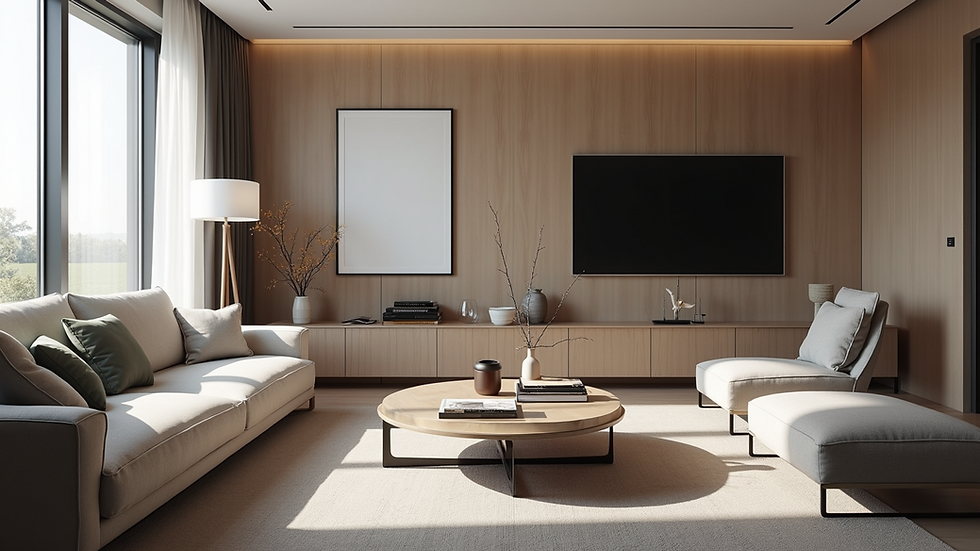Commercial and Residential Design: We’ve Got You Covered
- tmorgan382
- Aug 22
- 4 min read
Design is everywhere. It shapes our homes, our workplaces, and even our cities. Whether you are looking to create a cozy living space or a functional office, understanding the principles of design can make a significant difference. In this post, we will explore the world of commercial and residential design, highlighting key elements that can elevate any space.
Understanding the Basics of Design
Design is not just about aesthetics. It is about creating spaces that serve a purpose. In residential design, the focus is often on comfort and style. In commercial design, functionality and branding take center stage.
Key Differences Between Commercial and Residential Design
Purpose: Residential design aims to create a comfortable living environment. Commercial design focuses on functionality and brand representation.
Audience: Residential spaces cater to individuals or families. Commercial spaces serve customers and employees.
Regulations: Commercial designs must adhere to stricter building codes and regulations compared to residential designs.
These differences shape how designers approach each project.
The Importance of Space Planning
Space planning is crucial in both commercial and residential design. It involves arranging furniture and other elements to create a functional layout.
Tips for Effective Space Planning
Understand the Flow: Consider how people will move through the space. Ensure there are clear pathways.
Prioritize Functionality: Each area should serve a specific purpose. For example, a living room should be inviting and comfortable.
Use Scale and Proportion: Choose furniture that fits the size of the room. Oversized furniture can make a small room feel cramped.
Effective space planning can transform a cluttered area into a well-organized haven.
Choosing the Right Color Palette
Color plays a vital role in design. It can influence mood and perception.
Tips for Selecting Colors
Consider the Purpose: Warm colors like red and orange can energize a space, while cool colors like blue and green can create a calming atmosphere.
Test Samples: Always test paint samples on the walls before making a final decision. Lighting can change how colors appear.
Create Harmony: Use a cohesive color scheme throughout the space. This creates a sense of unity.
A well-chosen color palette can enhance the overall feel of a room.
Lighting: The Unsung Hero of Design
Lighting is often overlooked, yet it is one of the most important elements in design. It can change the mood and functionality of a space.
Types of Lighting
Ambient Lighting: This is the general light that fills a room. It can come from ceiling fixtures or natural light.
Task Lighting: This type of lighting is focused on specific areas, such as a desk or kitchen counter.
Accent Lighting: Used to highlight artwork or architectural features, accent lighting adds depth to a space.
When designing a space, consider layering different types of lighting for the best effect.
Furniture Selection: Function Meets Style
Choosing the right furniture is essential in both commercial and residential design. It should be functional, comfortable, and stylish.
Tips for Furniture Selection
Consider the Space: Choose furniture that fits the scale of the room.
Think About Comfort: Test furniture for comfort before purchasing.
Match the Style: Ensure the furniture complements the overall design theme.
The right furniture can enhance the functionality and aesthetic of any space.
Incorporating Technology in Design
In today’s world, technology plays a significant role in design. Smart home devices and commercial tech can enhance functionality and convenience.
Examples of Technology in Design
Smart Thermostats: These devices can help manage energy use in residential spaces.
Automated Lighting: In commercial spaces, automated lighting can improve energy efficiency.
Integrated Sound Systems: These can enhance the experience in both homes and businesses.
Incorporating technology can make spaces more efficient and enjoyable.
Sustainability in Design
Sustainable design is becoming increasingly important. It focuses on creating spaces that are environmentally friendly.
Tips for Sustainable Design
Use Eco-Friendly Materials: Choose materials that are sustainable and have a low environmental impact.
Maximize Natural Light: Design spaces to take advantage of natural light, reducing the need for artificial lighting.
Incorporate Green Spaces: Adding plants can improve air quality and enhance the aesthetic of a space.
Sustainable design not only benefits the environment but can also create healthier living and working spaces.
The Role of Personalization
Personalization is key in both residential and commercial design. It allows individuals to express their style and preferences.
Ways to Personalize a Space
Artwork: Incorporate personal artwork or photographs to add character.
Color Choices: Use colors that reflect your personality.
Unique Furniture: Choose pieces that tell a story or have personal significance.
Personalized spaces feel more inviting and comfortable.
The Future of Design
As we look to the future, design will continue to evolve. Trends will change, but the core principles will remain the same.
Emerging Trends to Watch
Biophilic Design: This trend focuses on connecting people with nature through design.
Flexible Spaces: As work environments change, flexible spaces that can adapt to different needs will become more popular.
Smart Home Integration: The integration of smart technology will continue to grow, making homes and businesses more efficient.
Staying informed about trends can help you create spaces that are both functional and stylish.
Bringing It All Together
Design is a powerful tool that can transform spaces. Whether you are working on a residential or commercial project, understanding the principles of design can lead to better outcomes.
By focusing on space planning, color selection, lighting, furniture, technology, sustainability, and personalization, you can create spaces that are not only beautiful but also functional.
Remember, design is not just about making things look good. It is about creating environments that enhance our lives.

As you embark on your design journey, keep these principles in mind. They will guide you in creating spaces that truly reflect your vision and meet your needs.
Design is an ongoing process. It evolves with our tastes, lifestyles, and technologies. Embrace the journey, and let your creativity shine.





Comments